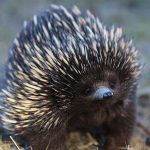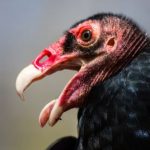 Music
Music  Music
Music  History
History 10 Less Than Jolly Events That Occurred on December 25
 Weird Stuff
Weird Stuff 10 Funny Ways That Researchers Overthink Christmas
 Politics
Politics 10 Political Scandals That Sent Crowds Into the Streets
 Weird Stuff
Weird Stuff Ten Bizarre Facts About The Doge Meme
 Our World
Our World 10 Ways Your Christmas Tree Is More Lit Than You Think
 Movies and TV
Movies and TV The 10 Coolest Stars to Set Sail on The Love Boat
 History
History 10 Things You Didn’t Know About the American National Anthem
 Technology
Technology Top 10 Everyday Tech Buzzwords That Hide a Darker Past
 Humans
Humans 10 Everyday Human Behaviors That Are Actually Survival Instincts
 Music
Music 10 Surprising Origin Stories of Your Favorite Holiday Songs
 History
History 10 Less Than Jolly Events That Occurred on December 25
 Weird Stuff
Weird Stuff 10 Funny Ways That Researchers Overthink Christmas
Who's Behind Listverse?

Jamie Frater
Head Editor
Jamie founded Listverse due to an insatiable desire to share fascinating, obscure, and bizarre facts. He has been a guest speaker on numerous national radio and television stations and is a five time published author.
More About Us Politics
Politics 10 Political Scandals That Sent Crowds Into the Streets
 Weird Stuff
Weird Stuff Ten Bizarre Facts About The Doge Meme
 Our World
Our World 10 Ways Your Christmas Tree Is More Lit Than You Think
 Movies and TV
Movies and TV The 10 Coolest Stars to Set Sail on The Love Boat
 History
History 10 Things You Didn’t Know About the American National Anthem
 Technology
Technology Top 10 Everyday Tech Buzzwords That Hide a Darker Past
 Humans
Humans 10 Everyday Human Behaviors That Are Actually Survival Instincts
10 Diabolical Nature Facts That Will Scare You Back Indoors
Mother Nature has a good side. Cute baby animals. Species working in lockstep to survive. Gorgeous green rainforests. But she also has a devilish side that reads like a crazy, dark fairy tale. From animals that steal body parts (and keep them alive) to trees that assassinate birds, here are 10 reasons to cancel that picnic and stay home instead.
Related: Top 10 Creepiest Sounds You Can Hear in Nature
10 Birds Use Cigarettes to Fight Parasites
It’s no secret that birds furnish their nests with whatever human rubbish they find on the ground. Roughly 176 bird species have been recorded weaving plastic, string, candy wrappers, and cigarette butts into their nests.
In 2012, researchers published a study that specifically focused on cigarette butts as an avian building material. As it turned out, adding the disgusting stumps to their nests was a surprisingly clever move. Nests with more cigarette filter fluff contained fewer parasitic mites.
To confirm this finding, the team lured mites to fake nests containing either new or used butts. The mites preferred the nests with unsmoked filters. Since smoked filters contain more nicotine, this suggests that birds are actively seeking out used cigarette butts to poison the parasites. If true, it’s still a mystery how birds know nicotine is toxic to mites—or how they learned that cigarette butts, and not other types of trash, keep their nests parasite-free.[1]
9 Nature Annihilates Billions of Trees Every Year
It’s not a good idea to stand under a tree during a thunderstorm. Lightning might strike that elm and electrocute you. Here’s another reason to shelter indoors when it rains. According to a 2025 study, fried trees are not a rare event. Up to 320 million trees die every year because the sky was mad.
As part of the investigation, researchers used a camera-based lightning detection system in Panama. They discovered that 320 million bolts did not strike a tree each. Sure, some strikes were satisfied offing a single spruce, but others jumped from tree to tree like a mad game of checkers, killing an average of three trees per strike.
Despite this prolific death rate, lightning is only responsible for 6.3% of tree mortalities. Other natural causes combine to reap a staggering number of trees annually, totaling up to 50 billion plants.[2]
8 But Some Trees Are Lightning Junkies
When struck by lightning, most trees expire faster than an avocado. Not Dipteryx oleifera. These pain-loving giants not only survive lightning strikes but actually thrive after the shock.
Researchers first noticed the odd situation in 2015, when lightning hit a Dipteryx oleifera with such force that it blasted a parasitic vine from its branches and killed every tree around it. The Dipteryx? Like a roach, it seemed impervious to what, by all measures, should have destroyed it.
This prompted a study that examined 94 trees struck by lightning in Panama’s Barro Colorado Nature Monument. Among them were nine Dipteryx oleifera. They all survived, while nearly 60 percent of the other trees died. This proved the 2015 discovery was not a fluke—Dipteryx oleifera is lightning-proof.
Why would a tree evolve to thrive on something so dangerous? In short, it’s a tactic to wipe out the competition. For every Dipteryx struck in the study, an average of nine neighbors perished as the lightning jumped to them. This keeps plant growth around the trees sparse, allowing them to soak up more sun. The question remains: how can this species tolerate millions of volts? Nobody knows.[3]
7 Hippos Cause Fish Massacres
The Mara River flows through Kenya and Tanzania, and quenches the thirst of animals in nature reserves on both sides. It’s not always an idyllic scene. Sometimes, water levels rise from rainfall and retreat, leaving countless dead fish behind on the banks.
To solve the smelly situation, scientists embarked on a three-year investigation that involved a lot of water tests. Around 171 hippo pools upstream had to be monitored. Although hippos may look chonky and cute, they are one of Earth’s most dangerous animals. The team had to use remote-controlled boats to zip between the hippos and sample the water.
They discovered that the hippos add about 9.3 tons (8,500 kg) of poop to the pools every day. The waste decomposes, a process that depletes oxygen and releases toxic chemicals like ammonium and hydrogen sulfide. When it rains, this oxygen-poor, poisonous water flows from the pools into the river and suffocates the fish. Some overflows were deadly enough to kill the fish 13 times over.[4]
6 Australia Now Protects Prey from Cats
When European settlers first docked in Australia in 1788, cats meandered off the ships and into an ecosystem that was unprepared for them. In the decades that followed, the felines drove over a dozen species to extinction and chased many more to the brink of oblivion. Today, feral cats kill about 1.4 billion native mammals, reptiles, and birds every year. Pet cats kill another 390 million.
The slaughter is so widespread that the Australian parliament was forced to admit that cats are the main force behind mammal extinctions in the country. But dealing with the problem isn’t easy. Animal rights groups are aggressively against destroying the cats. Instead, some suggest sterilize-and-release programs to reduce the feral population and a permanent lockdown for pets.
Amidst this crisis, Project Noah offers hope to beleaguered wildlife. It involves fencing off an area, populating it with native animals, and keeping it cat-free. The first enclosure staked out a 36-square-mile reserve in Newhaven and was completed in 2018. Safe from humans and cats alike, extremely vulnerable species are now making a comeback inside this sanctuary, hopefully paving the way for more feline-free zones.[5]
5 Orcas Perform Murder Drills
In 2025, a BBC film crew followed a pod of killer whales in Bremer Bay, Western Australia. Their goal was to capture footage for an upcoming documentary about animal parents. The crew got more than they bargained for—a brutal lesson from an orca mum teaching calves how to drown a blue whale by allowing them to practice on one of their own. During the training sessions, one young orca allowed others to hold it underwater and cover its blowhole so that it couldn’t breathe.
It makes sense that orcas should do a few dry runs with this particular prey. As the largest animals on Earth, blue whales can put up a dangerous resistance. But how did the crew know the intended target was a blue whale? They later filmed the same pod using the exact technique to surprise and dunk a massive blue whale, although it’s unclear whether they succeeded in overpowering it.[6]
4 Mega-Tsunamis Shook Earth for 9 Days
A mysterious event took place in 2023. In September, the entire world shook for nine days straight. In the two years that followed, geologists couldn’t figure out why Earth had trembled. Then, in 2025, satellite footage revealed the likely culprit—monster tsunamis trapped and thrashing inside an East Greenland fjord.
The imagery revealed that the fjord had suffered landslides, which triggered the gigantic waves. One of the biggest measured 650 feet (200 meters) high. For perspective, if you stood halfway up the Empire State Building, you would be level with this tsunami’s crest. The waves entered the Dickson Fjord and rocked back and forth with such force for nine days that they sent seismic waves throughout the entire planet’s crust.[7]
3 A Poisonous Apple Straight Out of Snow White
Meet the beach apple. Apart from its delightful name, the apple-like fruit also smells and tastes like a sweet plum. Wonderful, right? Well, this description came from a medical professional who took a bite—and suffered excruciating consequences. She had swallowed a piece of what Christopher Columbus once referred to as manzanilla de la Muerte, or “little apple of death.”
Also known as the manchineel tree, the plant looks deceptively ordinary and harmless. However, Guinness World Records crowned it the most dangerous tree in the world, and with good reason.
Eating the fruit invites internal bleeding, severe swelling of the throat that often requires intubation, cardiac abnormalities, and even death. Rub against the tree’s bark and you might get chemical burns. People have also made the mistake of sheltering under a manchineel during a rainstorm, and the dripping sap caused severe skin irritation and burns.[8]
2 Sea Slugs Keep Stolen Body Parts Alive
With a frilly body and ears like Shrek, the lettuce sea slug is one of the most adorable animals in the ocean. But this curly cucumber does something straight out of a Frankenstein movie—it removes body parts from other organisms. It uses them as power batteries to harvest extra food from the sun. Okay, maybe it’s more like sci-fi.
It works like this. An alga floats by, minding its own business. The slug pounces (sort of) and eats it. Most of the alga is digested as food, but the slug’s gut also removes chloroplasts. These structures allow algae to photosynthesize for energy. Amazingly, the chloroplasts are extracted without harm and kept alive. These “solar panels” are then placed on the slug’s back and put to work.
The klepto slug could have other uses for the chloroplasts. Researchers suspect that the stolen body parts might also improve the slug’s camouflage, act as an emergency food source, and make the animal less tasty to predators.[9]
1 Pisonia Trees Assassinate Birds
Plants use clever tricks to spread their DNA. A common method involves seeds that grab onto the fur of a passing animal. If all goes well, the seeds hitchhike a good distance away from the parent plant, drop off to the ground, and germinate. One tree takes this tactic too far.
Pisonia trees grow on tropical islands located in the Pacific and Indian Oceans. Some species of Pisonia produce nightmare seeds, which are long, gummy, and covered with tiny hooks. When birds land on a branch or move between the pods on the ground, the seeds pile on mercilessly. Smaller birds get so weighed down that they cannot fly away. Inevitably, they die under the tree (or glued to the branches), while others are picked off by predators.
The slaughter doesn’t benefit the trees, so why grow seeds that are basically bird bullets? Maybe the pods are an evolutionary blooper. Or, more frighteningly, the trees are exactly what they appear to be—refined bird-killing machines. If the latter is the case, then future research might one day reveal why. For now, the macabre tree remains a true murder mystery.[10]








